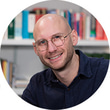An Indian mission: part 2
Specialist optometrist at Moorfields Eye Hospital and Hillingdon Hospital, Rajula Karania, shares her experience training ophthalmic professionals in the north eastern state of Bihar, India as part of her continuing work with Second Sight, the AOP Awards Charity of the Year 2019
I have made four trips to Bihar for Second Sight. When the charity began in 2000, Bihar was the worst place in the world for curable blindness.
Our partner hospitals are doing a great job in tackling cataract blindness, but we recognised that the provision of eye services for children had to be improved, particularly when it came to the avoidable blindness caused by undiagnosed refractive error. As a result, I first went to Bihar specifically to teach cycloplegic retinoscopy to ophthalmic assistants.
On my last trip to Bihar with Second Sight, which was in January–February this year, I checked on their progress. These ophthalmic assistants are far more skilled than their counterparts in the UK. They do everything from giving anaesthetic blocks and village screening, to assisting in the operating theatre as scrub nurses.
As they get particularly busy with a huge workload of cataract-blind patients, it was important for me to check that they had been able to maintain and improve their refraction skills.
The aim of the trip
During this trip I had another specific brief – to refresh and expand the knowledge of the junior doctors who man the out patients department at three hospitals in Bihar. Training consisted of indirect ophthalmoscopy, using 90-D lens for disc assessment, and Goldman applanation tonometry. Again, because of the workload at the hospitals, it was important for me to remind the doctors and ophthalmic assistants to ensure that they always remember to take a good history and examination for every patient, and to document this.
Second Sight’s aim is to ensure that each hospital in Bihar can offer a high quality, comprehensive eye care service to all patients. Each district hospital is working to be the first port of call for all patients who require ophthalmic services, and to also be a safety net for the very poorest.
Reaching out
A highlight from my trip was definitely the large outreach diagnostic camps that we conducted.
At the first camp, which was run by Laxman Eye Hospital, I was working in the field alongside the local teams that I have helped train over the years. We refracted villagers onsite, carried out fundus checks using direct ophthalmoscopy and treated minor eye conditions that we could there and then – many villagers cannot afford to take time off and travel to hospital, which can be quite some distance away. Complex cases were of course brought into hospital or given a date to attend for further examination and treatment.
The second outreach camp was in an entirely different district in Southern Bihar with the Drishti Eye Care Hospital. This team was new to me. My first impression was that they were extremely well organised both in the camp and back at the hospital. At the time that I visited, they were awaiting the arrival of a full-time ophthalmologist to run the out patients department. Therefore, the clinics were currently being run by three optometrists. They had all completed a two-year diploma in optometry but had different levels of expertise. I was happy to be able to give them individual training.
Second Sight’s aim is to ensure that each hospital in Bihar can offer a high quality, comprehensive eye care service to all patients. Each district hospital is working to be the first port of call for all patients who require ophthalmic services, and to also be a safety net for the very poorest
Training nears completion
During the final years of working in Bihar, Second Sight is consolidating training at all partner hospitals where it is required. Whilst the financial backing that the charity currently provides to these hospitals will end when they move into self-sufficient and sustainable roles at the end of 2020, I think that many of us who volunteer for the charity may continue to visit anyway.
Close clinical links have been the basis of Second Sight’s unique modus operandi and I am sure that it will continue for years to come.
At a personal level, I am humbled by this incredible journey from which I have personally gained so much. I am grateful to Second Sight’s founder, Dr Lucy Mathen, for giving me this opportunity and platform to contribute to the work of the charity. As a result, not only has it added immense value to my professional and clinical development, but it has made me more passionate than ever before about teaching optometry.
Second Sight was named the AOP Awards Charity of the Year 2019. For more information on the charity, visit its website.
- As told to Emily McCormick.
Advertisement



Comments (0)
You must be logged in to join the discussion. Log in